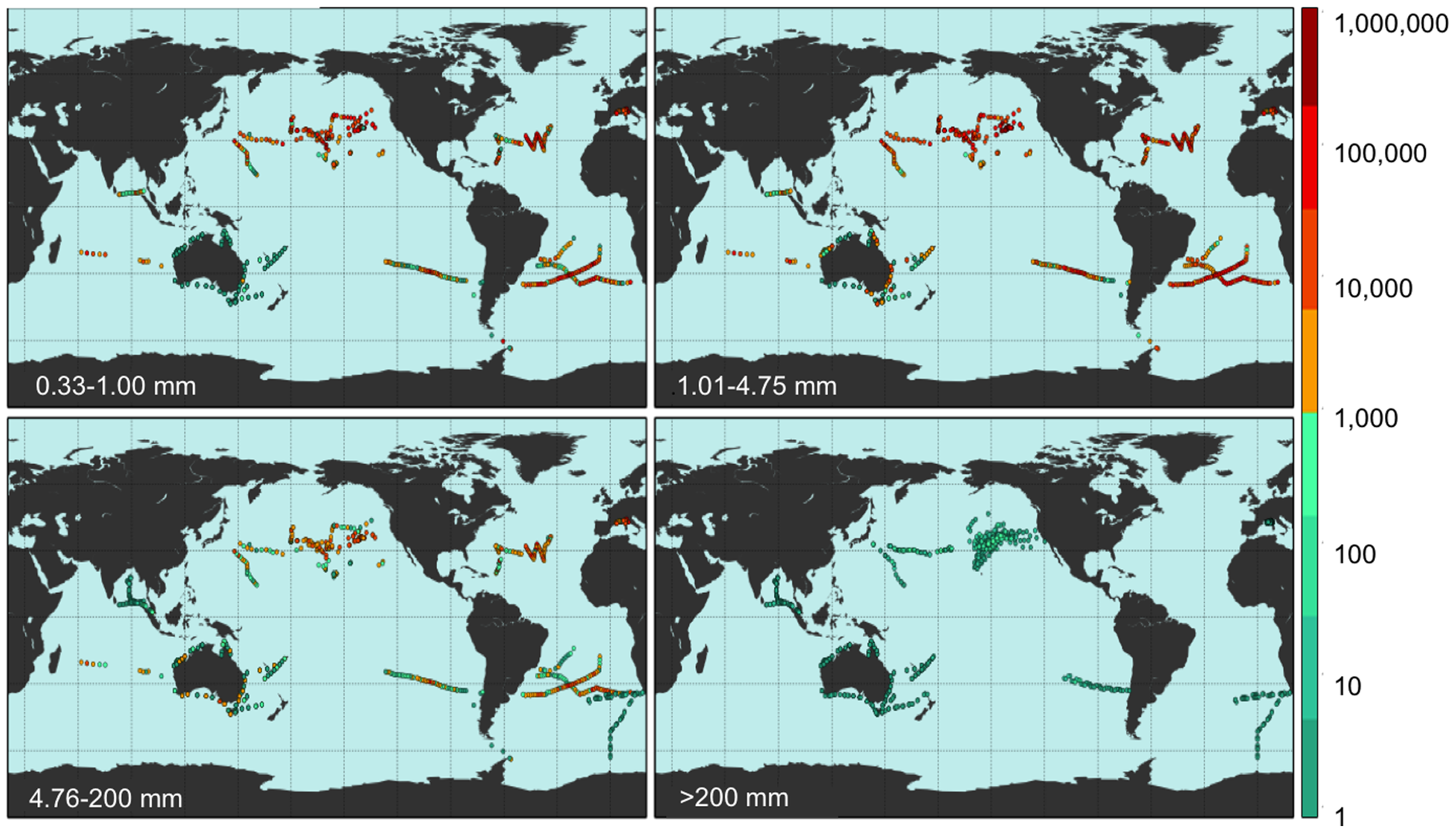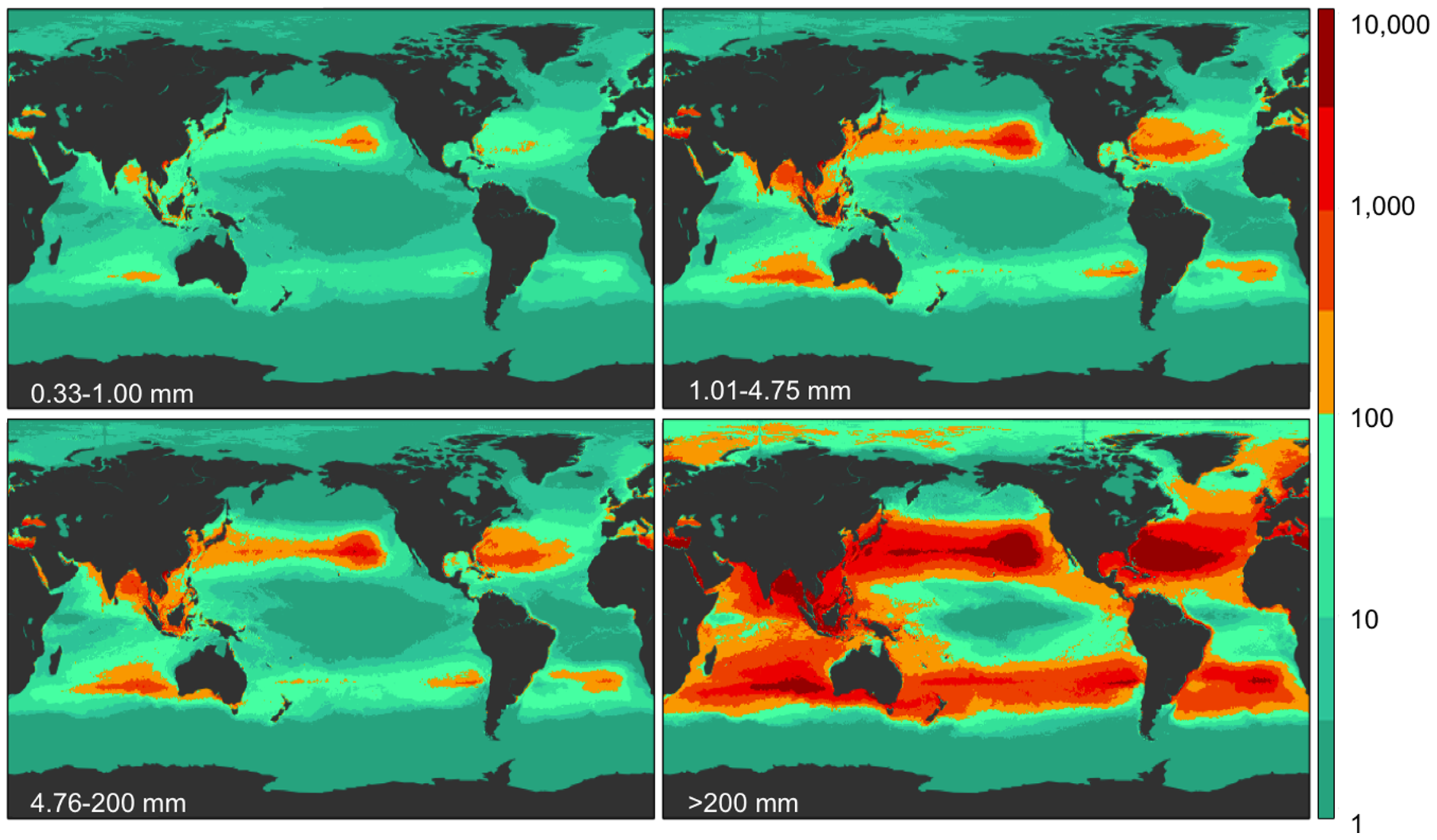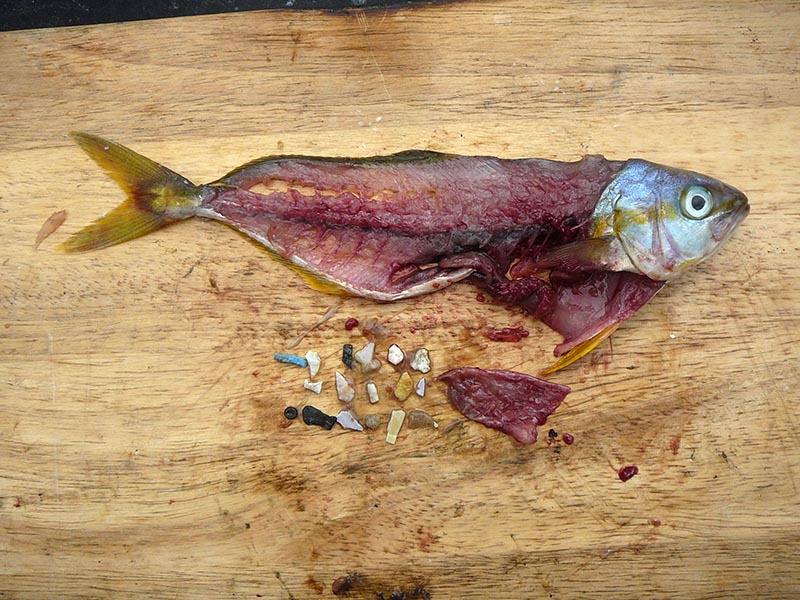A recent Plos One article, titled “Plastic Pollution in the World’s Oceans: More than 5 Trillion Plastic Pieces Weighing over 250,000 Tons Afloat at Sea,” has attracted a lot of attention, if only because of the magnitude of the measured debris problem. But the volume of plastic debris estimated by the study is only part of the problem. Not only are the study’s numbers admittedly conservative, but the results of the study indicate that a huge amount of plastic is missing, presumably laying on the ocean floor, being trapped in sea ice, and/or becoming part of the food chain.
Marcus Erikson, the lead author of the Plos One article puts it this way: “I think everyone who knows of the plastic problem in the ocean envisions an enormous area with nothing, but water bottles, bottle caps, plastic containers, and lighters. What is the reality? You do find those but they are few and far between. The idea of the island of trash does not exist. If it did exist the plastic problem in the oceans would be fixable. What we have is this massive plastic field of tiny plastic particles that is covering a quarter of our earth’s surface. This plastic field is peppered with small plastic particles of varying concentrations. These small plastic particles are a much more insidious problem than an island of trash we could just go pick up” (source).
“Large plastics appear to be abundant near coastlines, degrading into microplastics in the 5 subtropical gyres, and the smallest microplastics were present in more remote regions, such as the subpolar gyres, which the authors did not expect. The distribution of the smallest microplastics in remote regions of the ocean may suggest that gyres act as ‘shredders’ of large plastic items into microplastics, after which they eject them across the ocean.
‘Our findings show that the garbage patches in the middle of the five subtropical gyres are not the final resting places for the world’s floating plastic trash. The endgame for micro-plastic is interactions with entire ocean ecosystems,’ says Marcus Eriksen, PhD, Director of Research for the 5 Gyres Institute” (source).
“If feeding your children fish fingers laced with tiny bits of plastic doesn’t sound horrifying enough, it’s the nasties that come with marine plastic that have some scientists calling it hazardous waste. Endocrine disruptors such as phthalates are used as plastic softeners, pesticides like DDT, POPs (persistent organic pollutants), and flame retardants readily adhere to plastic. Meaning tiny plastic fragments are highly toxic — poisonous pills, if you will — swallowed firstly by unwitting fish and then by those at the top of the food chain. Us” (source).
“Erikson does think the tide of plastic pollution is turning. As we ban single-use plastic bags — one city, one state at a time — we are entering the Age of Restoration. He thinks if we can turn off the waste tap and stop abusing our oceans, they will eventually dispel all the plastic and heal. He suggests looking to the waste-pickers of the world for conservation tips. Whether in Mumbai or Los Angeles, sorting through a landfill or dumpsters, waste-pickers follow the money. They bypass most plastic items, only taking what has recycling monetary value — bottles with guaranteed refunds. If a value is put on all post-consumer plastic, Erikson envisions less plastic poisoning marine food webs and littering our planet” (Ibid.)





